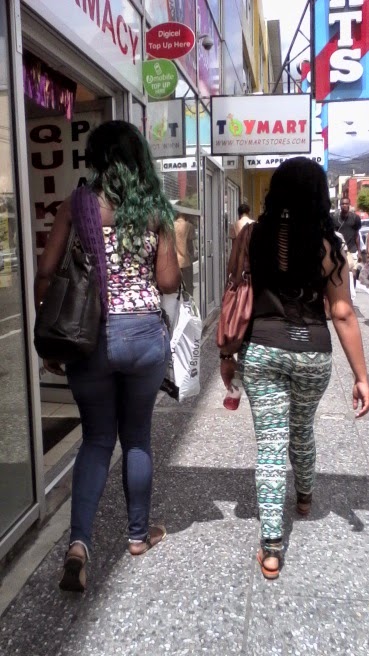Review of course colleagues' blogs as they relate to themes displayed here and are recommended for additional interrelated reading.
Homelessness In Chaguanas & Port of Spain
Daniella Ramdeo, Rosa Ramkissoon & Saffiyah Mohammed
http://chaguanas-pos-homlesspeople.blogspot.com/
As it stands this blogs seeks to investigate homelessness in the urban places of Port of Spain and Chaguanas.The themes of this blog are closely tied to that of Surviving on the Streets of the Urban Trinidad. This blog explores the integration of homelessness to the culture of an urban place and the exclusion that the homeless face in these spaces.It confronts underlying problems that continue to exist in the scheme of homelessness ; homelessness of women, governmental intervention and mitigation, public stigma and the contribution to pollution by the homeless.
In its assessment the expository has cited theories by Pacione ( 2008) and has included relevant, but spare, references to the local media and commentary of the homeless.The use of visual aid were true to the realities of street dwelling in the city, and were a focal point in the expository.In their approach to photographing the homeless the contributers were honest about their reluctance and this was amusing.
A more immediate linkage to theories of the geographies of homelessness, and that of research of the Trinidad experience would have been enhancing to this expository. It would have also been interesting to include a more personal reflection or socialization with the homeless persons of Port of Spain and Chaguanas to speak to the realities of the being without a home.
Daniella Ramdeo, Rosa Ramkissoon & Saffiyah Mohammed
http://chaguanas-pos-homlesspeople.blogspot.com/
As it stands this blogs seeks to investigate homelessness in the urban places of Port of Spain and Chaguanas.The themes of this blog are closely tied to that of Surviving on the Streets of the Urban Trinidad. This blog explores the integration of homelessness to the culture of an urban place and the exclusion that the homeless face in these spaces.It confronts underlying problems that continue to exist in the scheme of homelessness ; homelessness of women, governmental intervention and mitigation, public stigma and the contribution to pollution by the homeless.
In its assessment the expository has cited theories by Pacione ( 2008) and has included relevant, but spare, references to the local media and commentary of the homeless.The use of visual aid were true to the realities of street dwelling in the city, and were a focal point in the expository.In their approach to photographing the homeless the contributers were honest about their reluctance and this was amusing.
A more immediate linkage to theories of the geographies of homelessness, and that of research of the Trinidad experience would have been enhancing to this expository. It would have also been interesting to include a more personal reflection or socialization with the homeless persons of Port of Spain and Chaguanas to speak to the realities of the being without a home.
Prestige and Position in Port of Spain
Jeaninne Wilson and Letesha Charles
This blog dealt with gender inequality, education, ethnicity, economic status and luck in relation to prestige and position. The blog also includes a post on social stratification which is directly linked to socioeconomic status that was also explored in Surviving the Streets of Urban Trinidad blog. In assessing prestige and position the socio economic classes are encased in that they are closely linked and influential to the other.
While pictures were somewhat difficult to comprehend (a description explaining the image and how it links to the theme would make the blog more coherent ) the topics discussed in each post were informative. The assessment was presented in an enhanced and appealing way to the reader. Use of theories such as Burgess' model of concentric zones as well as articles from newspapers were included in its application to furthur localization of the hierchical framework.
Integrating Disabilities Through Infrastructure
While pictures were somewhat difficult to comprehend (a description explaining the image and how it links to the theme would make the blog more coherent ) the topics discussed in each post were informative. The assessment was presented in an enhanced and appealing way to the reader. Use of theories such as Burgess' model of concentric zones as well as articles from newspapers were included in its application to furthur localization of the hierchical framework.
Integrating Disabilities Through Infrastructure
Paulette Nanda and Jonathan Ramnarine
The blog Integrating Disabilities through Infrastructure is
about how the disabled are accommodated within cities. Anyone can have a
disability no matter their level of education, income background and so on.
Disabilities are limiting and in Trinidad the disabled are inadequately
facilitated. Mentioned were measures already taken to facilitate the disabled.
The above blog relates to Surviving on the Streets of Urban
Trinidad's post on Disabled in Trinidad’s Urban Space. Common to both is the
social exclusion of persons with disabilities in these urban spaces. The only
difference though is the focus on streets and its accommodation of the
disabled. Individuals no matter what their stratified position are affected by
the infrastructure and facilities provide or not provided for their use.
The blog was very interesting and the points made were
easily understood. Most of the pictures at first glance convey what the blog is
about and the main issue of lack of or inadequate infrastructure for the
disabled was reflected. They pictures were also interesting to look at. Other
pictures required an explanation to be fully understood. There was not much use
of theories however reference of personal experience were used. The
latter made the blog more empathetic towards the disabled.

















